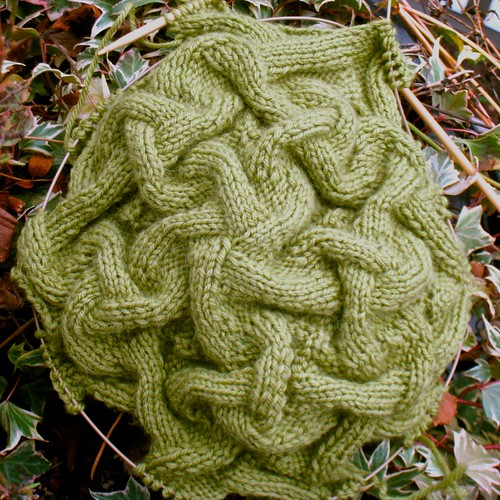On the left of the swatch (the right when flipped over) is the usual method of slipping the first stitch in every row of each entrelac square. Stitches for new squares are picked up from behind the slipped stitches. The squares are joined along their selvedges by working a stitch together with a live stitch from a previous square (on the left selvedge by ssk and on the right selvedge by p2tog).
On the right is the new method I've developed (not entirely original). For the squares on the right, the first stitch in each row is worked. Stitches for new squares in this method are picked up from the thread between the last stitch of a row and the first stitch of the next row (the turning thread). Squares are joined not by decreasing but by pulling loops from live stitches of a previous square and using that loop to knit two rows of the new square.
One advantage of the new method is apparent in the close-up pictures. There is no "grinning"-through (an industrial-knitting term) of the other color along the selvedges of the entrelac square.
Another thing to note about this swatch: The new joining method produces slightly bigger squares, since there is less overlap between adjacent squares. That is, the squares are no bigger, but the fabric produced is slightly bigger because of less overlap.



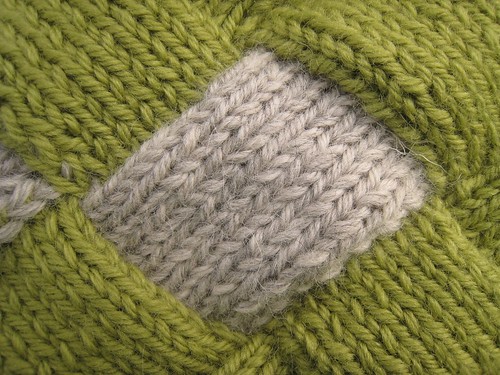
Below, I show the two sides of the swatch before blocking:
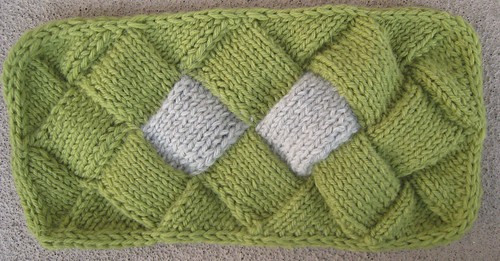

Notice how the new method produces entrelac fabric that has much higher relief. The fabric becomes much flatter with blocking.
I'm going to illustrate the two components of the new entrelac join (picking up from the turning thread, and the loop selvedge-join) in a later post.
![Reblog this post [with Zemanta]](http://img.zemanta.com/reblog_e.png?x-id=d9be8abc-1843-4b9b-87c9-a944e4317e57)

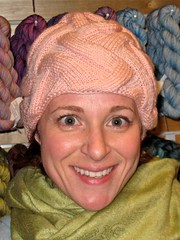
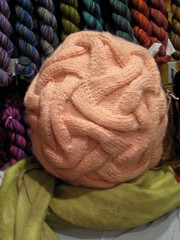

![Reblog this post [with Zemanta]](http://img.zemanta.com/reblog_e.png?x-id=b2d1fad2-2bf9-4f04-889f-9d0cada97933)

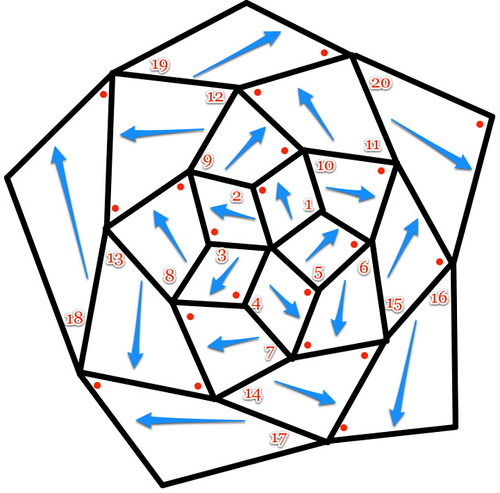
![Reblog this post [with Zemanta]](http://img.zemanta.com/reblog_e.png?x-id=c667abd5-d969-4922-aeed-3a4713c954db)
![Reblog this post [with Zemanta]](http://img.zemanta.com/reblog_e.png?x-id=9de89e16-f9f0-4c77-b121-d3ff785571f8)
![Reblog this post [with Zemanta]](http://img.zemanta.com/reblog_e.png?x-id=06ac22c2-0a1f-43fc-af5f-2ac19b8838df)







